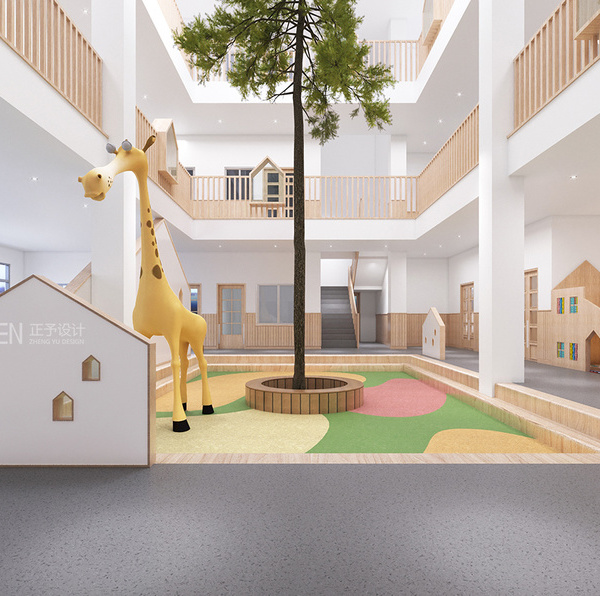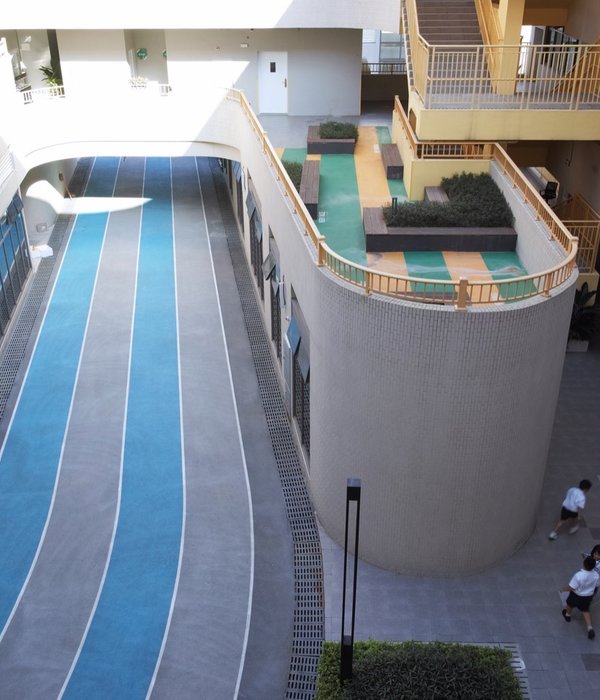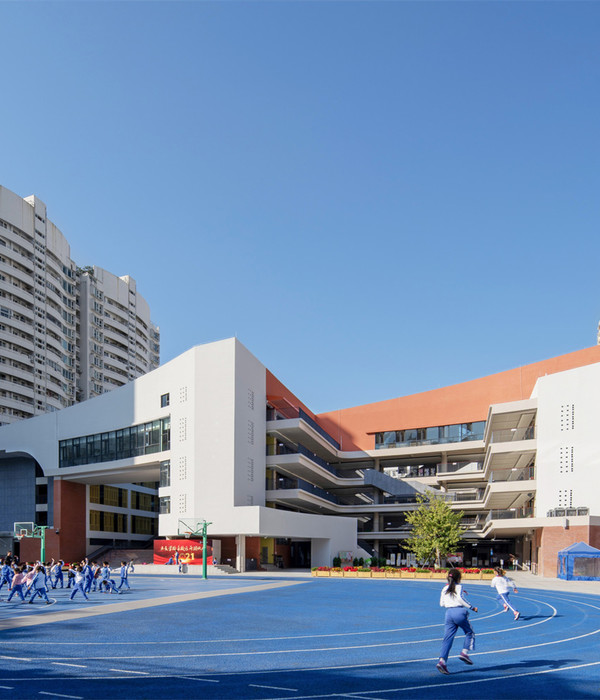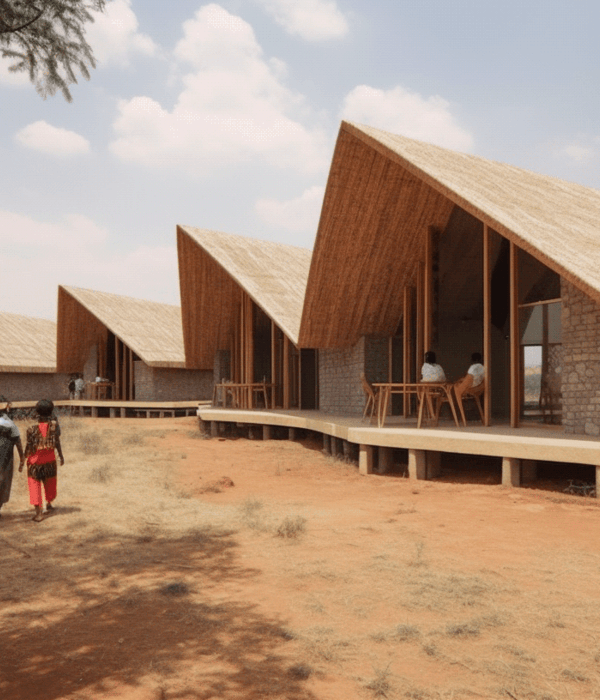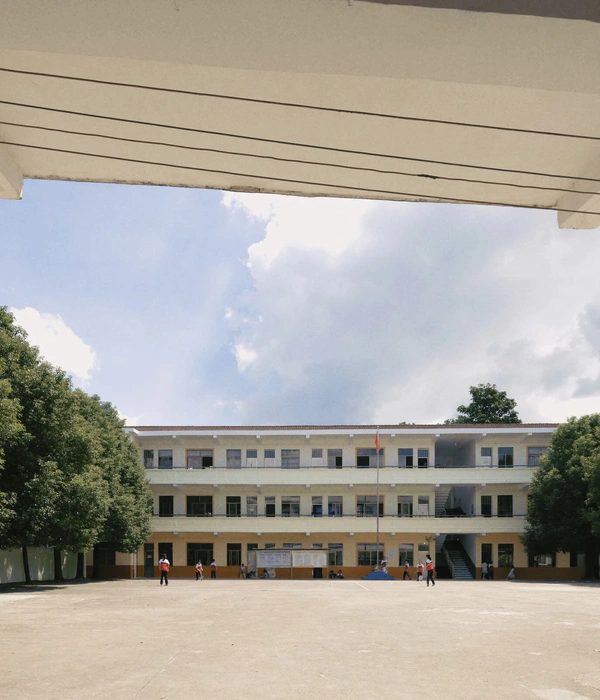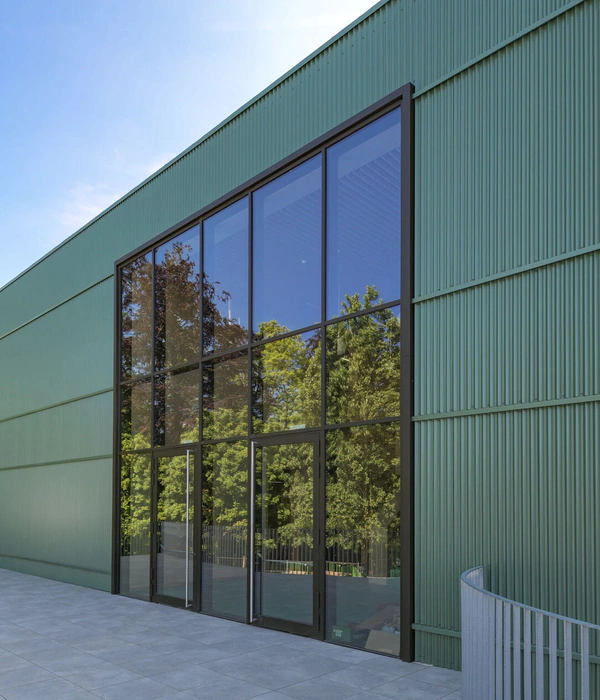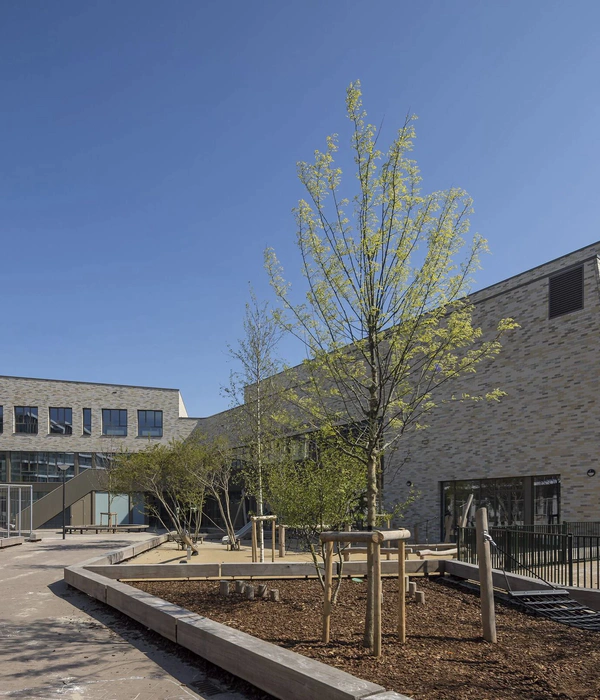HMC Architects designed a dynamic space for meeting, studying, and socializing at Los Angeles Harbor College Student Union in Los Angeles, California.
The student union sits at the intersection of two primary pedestrian paths adjacent to the main quad. The building encourages everyday use by centralizing all the college’s student life programs into one social hub on campus. The ground floor blends indoor and outdoor spaces with floor-to-ceiling glass windows to create an inviting area for dining and a multi-purpose lounge for student activities. There is a bookstore on the first floor, culinary arts classrooms, and spaces for student government on the second floor.
Like the ruins of an ancient city, a series of ground-level brick walls representing the campus’ architectural origins form the building’s base and elevates a shiny metal box that symbolizes a reimagined future. United under a wrapping shade canopy, these elements define the northwestern edge of the new campus quad and offer quick and easy access to the amenities within. Social collision points are strategically placed throughout to enable spontaneous interactions among the building’s users.
The building incorporates several high-performance design strategies to achieve LEED Gold Certification, including increased daylighting, drought-tolerant landscaping, and low-emitting materials. The building’s roof reflects solar radiation, and paving materials with low heat absorption reduce heat island impacts. Skylights bring daylight deep into the building, and exterior sunshades at window openings prevent glare while mitigating solar heat gain. Solar panels installed in the adjacent student parking lot offset over 17 percent of the building’s total energy use and helped achieve over 45 percent energy savings, positively impacting the college’s operational bottom line.
The 59,000 SF building is home to the culinary arts program, campus bookstore, dining hall, student government offices, and a multi-purpose space for recreation, large meetings, and social events. A spacious, two-story lobby and grand staircase make wayfinding clear and encourage natural socialization. Various sized social spaces with comfortable furniture create pockets for students to rest and recharge throughout the building. The dining hall’s glazed accordion doors slide away to connect to the outdoors, inviting students to come inside for a meal between classes. Culinary students learn the technical and business sides of the industry with two industrial-sized kitchens, two auditorium-style demonstration classrooms, and a small restaurant where student chefs cook and serve meals to their guests.
Design: HMC Architects Photography: Lawrence Anderson
Design: HMC Architects
Photography: Lawrence Anderson
14 Images | expand images for additional detail
{{item.text_origin}}


